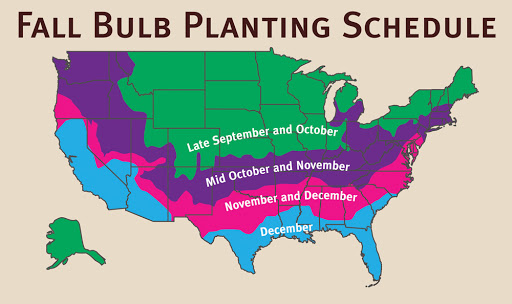I have worked with A.D.R. Bulbs for almost 5 years now, and my company has sourced bulbs with them for longer than that. Communication is great - from ordering, to deliveries, to follow-ups on final product. I love the quality of the product as well as the service. We plant nearly 100,000 bulbs and A.D.R. keeps the whole process easy for us!
Louise Licata
, Bland Landscaping Co.
« Previous Plant | Next Plant »
Tulipa Parrot 'Dee Jay Parrot'
Tulip
Dee Jay Parrot is a late-spring blooming parrot tulip with ruffled petals in a striking mix of fiery red, creamy yellow, and white. As the flower matures, the yellow edges gradually turn white.
This variety reaches 16 to 22 inches tall and thrives in full sun with well-drained soil. The flowers are large, typically 4 to 5 inches in diameter, creating a dramatic display in gardens and floral arrangements.
Tulipa Calculator
When should I plant Tulipa Parrot 'Dee Jay Parrot'?

Growing and Maintenance Tips for Tulipa Parrot 'Dee Jay Parrot'
Planting: Plant in fall when soil temperatures drop below 55°F. Set bulbs 6–8 inches deep, pointed end up. Choose a sunny, sheltered location to protect their large, irregular blooms from strong wind and spring storms.
Spacing: Space bulbs 4–6 inches apart. For full visual impact, plant 10 or more together—these tulips shine in bold, theatrical groupings.
Light: Full sun enhances color intensity and stem strength. Though tolerant of light shade, stronger light preserves bloom structure and vivid contrast.
Soil: Use well-drained, neutral to slightly acidic soil (pH 6–7). Poor drainage increases risk of rot—especially for these heavy-headed, late-season types.
Watering: Water after planting to settle soil. In spring, water only during dry periods—excess moisture can weaken stems and damage blooms.
Temperature & Dormancy: Requires 12–16 weeks of cold (below 50°F) to root and initiate flowering.
Fertilization: Apply balanced bulb fertilizer at planting and again in early spring to support strong stems and petal development.
Pests: Squirrels may disturb bulbs—protect with mulch or mesh. Deer will eat buds and foliage, especially in early spring—use repellents or fencing in high-pressure areas.
Disease: To prevent Botrytis (Tulip Fire), plant only healthy, firm bulbs in sunny, airy beds. Avoid overhead watering. Remove and destroy any infected foliage—never compost. Rotate sites annually and avoid replanting in affected areas for three years.







Check back soon for additional details.